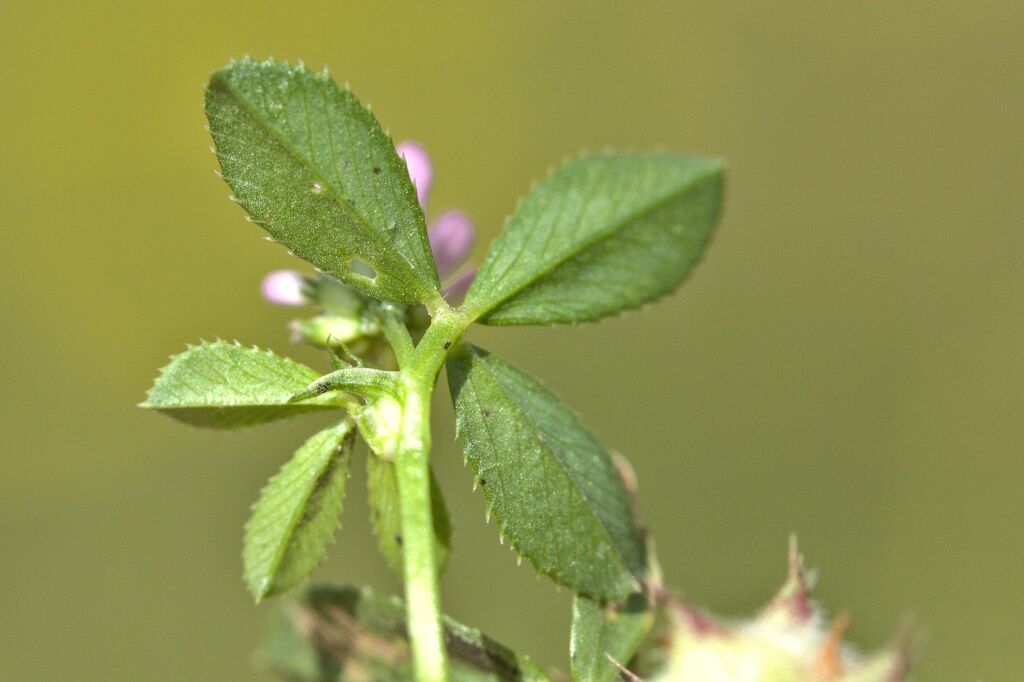Trifolium resupinatum
L. Shaftal CloverProstrate or erect annual herb; stems to 80 cm long, branching mainly from lower parts, glabrous to glabrescent. Leaves palmately trifoliolate, short-to long-petiolate; leaflets obovate, 5–50 mm long, 3–20 mm wide, glabrous, margins spinulose dentate, apex rounded; stipules membranous, distinctly veined. Inflorescence many-flowered, axillary, globose, 10–15 mm long, 5–15 mm wide, pedunculate; flowers pedicellate, erect after anthesis. Calyx at first c. 2 mm long, much inflated in fruit, villous on upper side, tube campanulate, usually 10-veined becoming reticulately veined in fruit, hairy or glabrescent, throat open and glabrous in fruit, teeth unequal, much shorter than tube, spiny, erect or spreading in fruit, lower 3 teeth somewhat shorter than upper 2; corolla 3–8 mm long, resupinate, pink to purple, not persistent; standard oblong, notched at apex. Pod ovoid, c. 2 mm long, membranous, included in calyx tube; seeds 1 or 2, ovoid, c. 1 mm long, brown.
Wim, GleP, Brid, VVP, VRiv, RobP, MuF, GipP, OtP, WaP, CVU, DunT, HSF, Strz.
Zohary & Heller (1984) recognize 3 varieties, 2 of which occur in Victoria.
Jeanes, J.A. (1996). Fabaceae. In: Walsh, N.G.; Entwisle, T.J., Flora of Victoria Vol. 3, Dicotyledons Winteraceae to Myrtaceae, pp. 663–829. Inkata Press, Melbourne.
 Spinning
SpinningZohary M.; Heller, D. (1984). The genus Trifolium. Israel Academy of Sciences and Humanities, Jerusalem.




